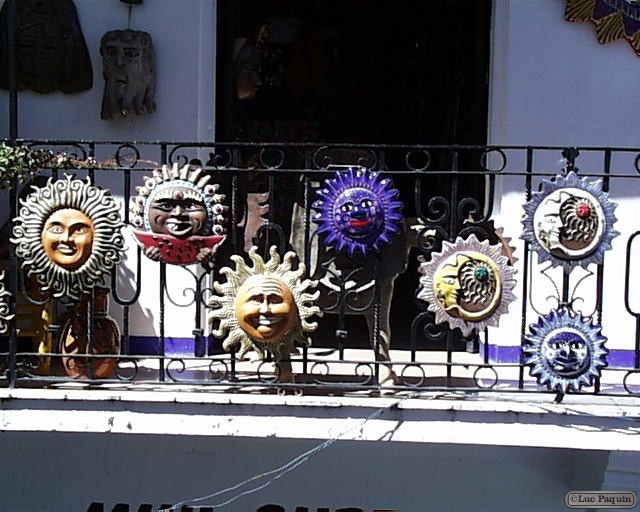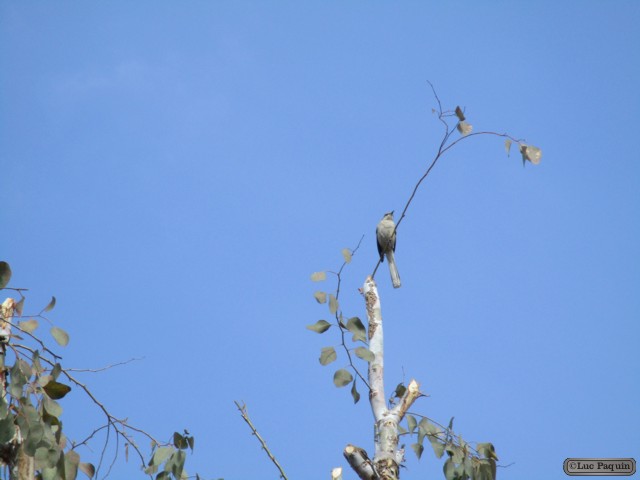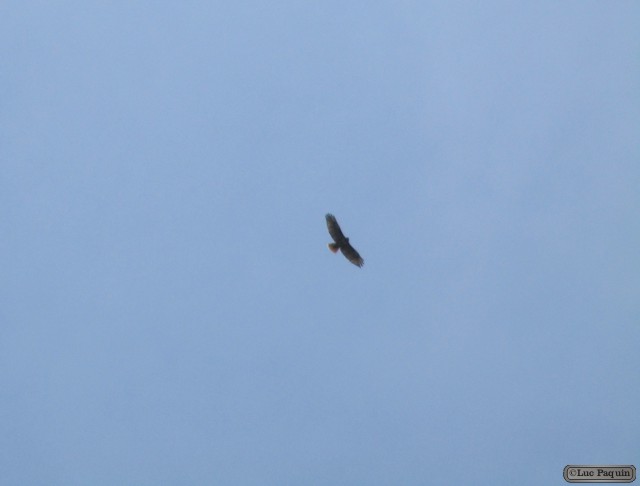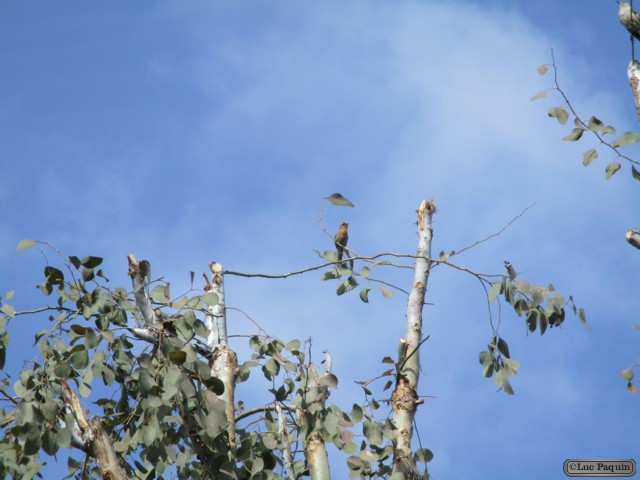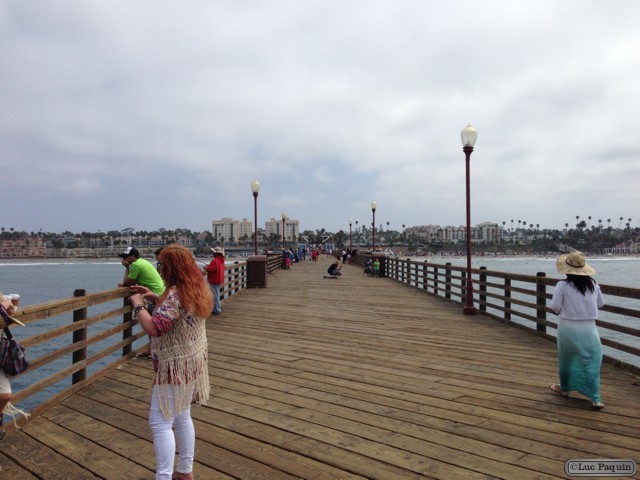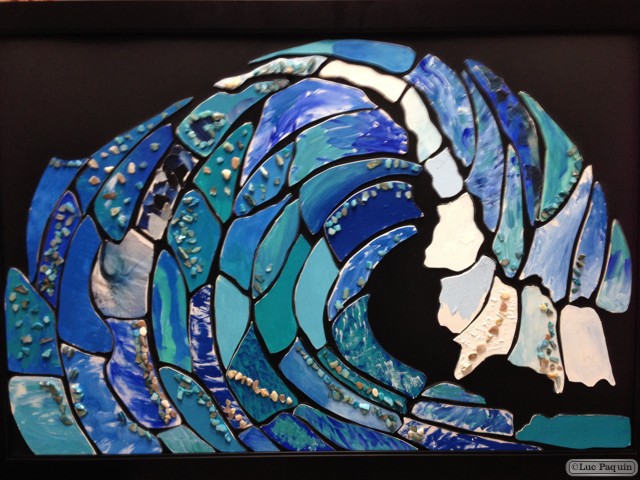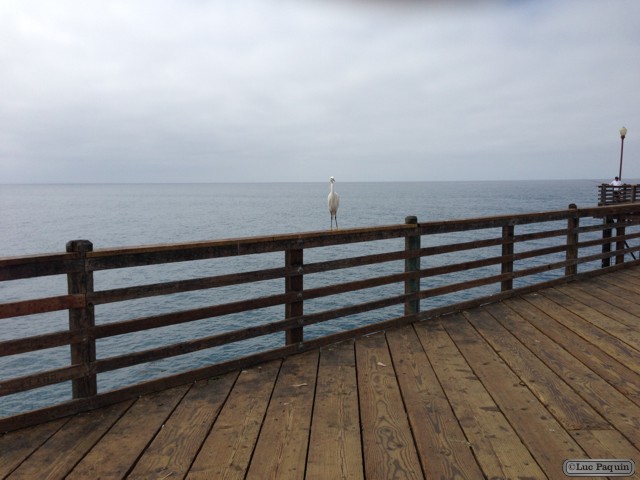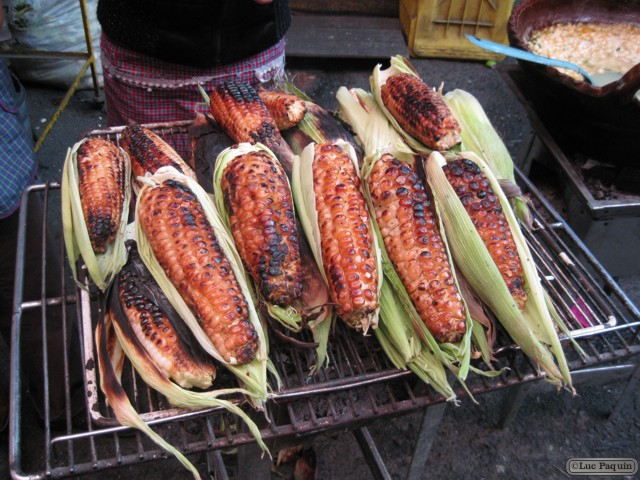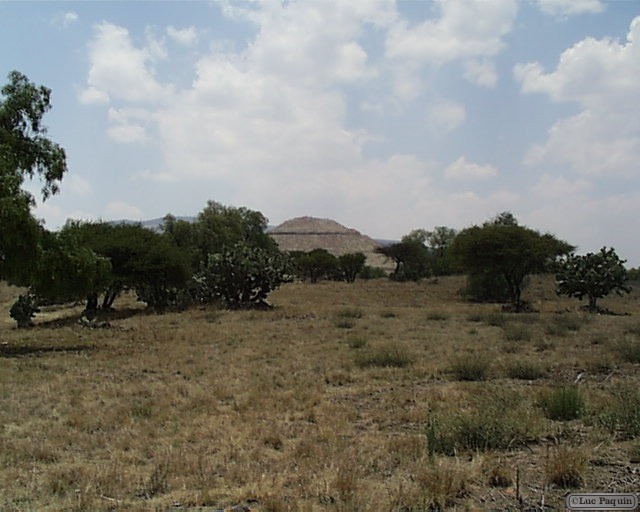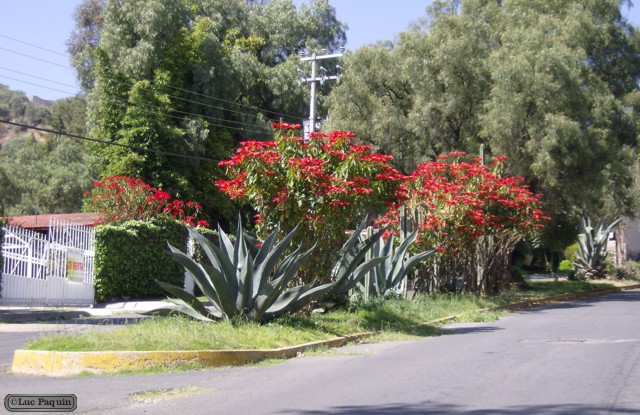Monthly Archives: May 2015
Year: 2003 (November 2003)
11″ x 8.5″
Media: Canon® Pro Platinum High Gloss Photo Paper
Printers: Canon® PIXMA
Color
Art: Photo
Artist: Luc Paquin
Taxco, Mexico
Silver and Silversmithing
Silverwork and tourism related to Taxco’s status as a silver town is the mainstay of the economy. There is one major mining operation on the outskirts of town, Industrial Minera México S.A., but this enterprise announced in 2007 that it will phase out operations here due to the depletion of reserves and labor problems. Most commercial activity related to silver is the production and sale of silver jewelry, silverware and other goods. Silversmithing was reinvigorated here by American William Spratling, who moved to Taxco in the 1920s, creating silver design workshops and exported items, mostly to the United States. With its fame for silversmithing, tourism became a major economic force for the town. Commerce in silver here is both regional and international. Just under half of the municipality’s population is involved in the tourism trade. Streets in the town are filled with silvershops selling jewelry, silverware and other goods.
Luc
Year: 2015 (May 13, 2015)
11″ x 8.5″
Media: Canon® Pro Platinum High Gloss Photo Paper
Printers: Canon® PIXMA
Color
Art: Photo
Artist: Luc Paquin
Rocking Horse Ln
Bewick’s Wren
The Bewick’s wren (Thryomanes bewickii) is a wren native to North America. At about 14 cm long, it is grey-brown above, white below, with a long white eyebrow. While similar in appearance to the Carolina wren, it has a long tail that is tipped in white. The song is loud and melodious, much like the song of other wrens. The song is broken into two or three individual parts; one individual male may exhibit up to twenty-two different variations on the song pattern, and may even throw in a little ventriloquism to vary it even further. It lives in thickets, brush piles and hedgerows, open woodlands and scrubby areas, often near streams. It eats insects and spiders, which it gleans from vegetation or finds on the ground. Wrens are sometimes observed foraging with chickadees and other birds.
Luc
Year: 2015 (May 11, 2015)
11″ x 8.5″
Media: Canon® Pro Platinum High Gloss Photo Paper
Printers: Canon® PIXMA
Color
Art: Photo
Artist: Luc Paquin
Vista Community Clinic
Eagle
Eagle is a common name for many large birds of prey of the family Accipitridae; it belongs to several groups of genera that are not necessarily closely related to each other.
Most of the sixty species of eagles are from Eurasia and Africa. Outside this area, just fourteen species can be found – two in North America, nine in Central and South America, and three in Australia.
Luc
Year: 2015 (May 13, 2015)
11″ x 8.5″
Media: Canon® Pro Platinum High Gloss Photo Paper
Printers: Canon® PIXMA
Color
Art: Photo
Artist: Luc Paquin
Rocking Horse Ln
House Finch
The house finch (Haemorhous mexicanus) is a bird in the finch family Fringillidae. It is found in North America, where its range has increased since the mid-twentieth century, and in the islands of Hawaii. This species and the other “American rosefinches” are placed in the genus Haemorhous by the American Ornithologists’ Union but have usually been included in Carpodacus.
Luc
Year: 2014 (August 12, 2014)
11″ x 8.5″
Media: Canon® Pro Platinum High Gloss Photo Paper
Printers: Canon® PIXMA
Color
Art: Photo
Artist: Luc Paquin
Oceanside Pier, North Coast Highway, Oceanside, CA, USA.
Oceanside Pier
History
Oceanside Pier was first built in 1888 at what is now Wisconsin Avenue. The original pier was destroyed by storms in the winter of 1890, and was rebuilt in 1893 by Melchoir Pieper at Pier View Way, where all subsequent piers would be located. Four iterations of the pier were built and then destroyed by heavy storms. The current pier was built and formally opened to the public in September 1987, at a cost of $5 million. At the foot of the pier is the Junior Seau Pier Amphitheatre, which hosts numerous events throughout the year. The Junior Seau Beach Community Center, also known as the Beach Recreation Center, is a 17,000 square foot facility located near the pier that includes a gymnasium, meeting room, stage, and kitchen. Both the amphitheater and the community center were renamed posthumously in 2012 in honor of hometown football hero Junior Seau.
Luc
Year: 2014 (August 6, 2014)
11″ x 8.5″
Media: Canon® Pro Platinum High Gloss Photo Paper
Printers: Canon® PIXMA
Color
Art: Photo
Artist: Luc Paquin
The CSUSM Speech-Language Clinic
The CSUSM Speech-Language Clinic provides services to individuals with neurological impairments to improve speech/language/cognitive skills. Graduate students provide individualized services under the guidance and supervision of state-licensed and nationally certified speech-language pathologists to approximately 100 individuals annually. Our goal is to provide functional speech-language therapy with a focus on promoting wellness, therefore improving our clients’ overall quality of life. When providing treatment, we keep family, caregiver, and client preferences in mind, and use an evidence-based practice approach.
Luc
Year: 2014 (August 12, 2014)
11″ x 8.5″
Media: Canon® Pro Platinum High Gloss Photo Paper
Printers: Canon® PIXMA
Color
Art: Photo
Artist: Luc Paquin
Oceanside Pier, North Coast Highway, Oceanside, CA, USA.
Oceanside Pier
The Oceanside Pier, located in Oceanside, in northern San Diego County, California, is a wooden pier on the western United States coastline at 1,954 feet (596 m).
Snowy Egret
The snowy egret (Egretta thula) is a small white heron. It is the American counterpart to the very similar Old World little egret, which has established a foothold in the Bahamas. At one time, the beautiful plumes of the snowy egret were in great demand by market hunters as decorations for women’s hats. This reduced the population of the species to dangerously low levels. Now protected in the United States by law, under the Migratory Bird Treaty Act, this bird’s population has rebounded.
Luc
Year: 2009 (November 22, 2009)
11″ x 8.5″
Media: Canon® Pro Platinum High Gloss Photo Paper
Printers: Canon® PIXMA
Color
Art: Photo
Artist: Luc Paquin
Mercado de Jamaica
There is a section dedicated to piñatas, most made with cardboard and covered in crepe paper, although more traditional ones with a clay pot in the center can still be found. Designs range from traditional stars to those based on recent figures from popular movies and television shows. The busiest time of year for this section of the market is December, before Christmas, when a tradition called “Las Posadas” often involves the breaking of one or more piñatas. While traditional to that season, the breaking of piñatas is no longer confined to December and can be found at various types of celebrations year round, which helps to support this section’s permanent presence.
Maize
Maize, known in some English-speaking countries as corn, is a large grain plant domesticated by indigenous peoples in Mesoamerica in prehistoric times. The leafy stalk produces ears which contain the grain, which are seeds called kernels. Maize kernels are often used in cooking as a starch. The six major types of maize are dent, flint, pod, popcorn, flour, and sweet.
Luc
Year: 2005 (June 02, 2005)
11″ x 8.5″
Media: Canon® Pro Platinum High Gloss Photo Paper
Printers: Canon® PIXMA
Color
Art: Photo
Artist: Luc Paquin
Teotihuacan
The original name of the city is unknown, but it appears in hieroglyphic texts from the Maya region as puh, or “Place of Reeds”. This suggests that the Maya of the Classic period understood Teotihuacan as a Place of Reeds similar to other Postclassic Central Mexican settlements that took the name Tollan, such as Tula-Hidalgo and Cholula.
This naming convention led to much confusion in the early 20th century, as scholars debated whether Teotihuacan or Tula-Hidalgo was the Tollan described by 16th-century chronicles. It now seems clear that Tollan may be understood as a generic Nahua term applied to any large settlement. In the Mesoamerican concept of urbanism, Tollan and other language equivalents serve as a metaphor, linking the bundles of reeds and rushes that formed part of the lacustrine environment of the Valley of Mexico and the large gathering of people in a city.
Luc
Year: 2007 (November 3, 2007)
11″ x 8.5″
Media: Canon® Pro Platinum High Gloss Photo Paper
Printers: Canon® PIXMA
Color
Art: Photo
Artist: Luc Paquin
Citlalin, Acozac, Mexico
Poinsettia
The poinsettia (Euphorbia pulcherrima) is a culturally and commercially important plant species of the diverse spurge family that is indigenous to Mexico and Central America. It is particularly well known for its red and green foliage and is widely used in Christmas floral displays. It derives its common English name from Joel Roberts Poinsett, the first United States Minister to Mexico, who introduced the plant into the United States in 1825.
Luc
